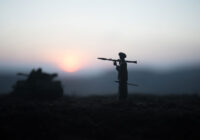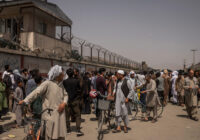Photojournalist Paula Bronstein unveils the ongoing stigma against women in Afghanistan.
Once upon a time, Afghanistan was considered to be progressive compared to its neighboring countries. But in recent decades, it has taken a dramatic shift toward conservative Islam. In the 1960s and 1970s, women were able to pursue an education, a career and could vote, but upon the Taliban’s control in the mid-1990s, they were stripped of fundamental human rights.
In 2011, Afghanistan was deemed one of the most dangerous places in the world to be a woman. To get a better understanding for the struggles of women in Afghanistan, photojournalist Paula Bronstein has spent the last 15 years documenting their life under Taliban ideology. In 1996, the Taliban imposed strict Islamic law, implementing bans that prevented women from leaving their house without a man, and demanded she cover herself with a burqa. The Taliban were ousted in 2001, but societal stigmas still remain.
Bronstein captured life in the East that often goes unheard by the West. Previous restrictions on women have created a demeaning space for women’s presence in Afghanistan, and many still abide by the old traditions of hiding behind a burqa because of the instilled mindset imposed by old traditions. Many are forced into marriage and suffer from domestic violence. Their culture has created a society where women are dependent on men, causing the widowed to be left in poverty. They are then left mothering children without an education and with no source of income.
Taliban presence still holds strong and longstanding social stigmas remain prevalent, but Bronstein sees a favoring incline in the encouragement of women’s rights. They are showing more strength and striving for justice by having a voice, leading a hopeful perseverance for equal rights.
The views expressed in this article are the author’s own and do not necessarily reflect Fair Observer’s editorial policy.
Photo Credit: MivPiv
Support Fair Observer
We rely on your support for our independence, diversity and quality.
For more than 10 years, Fair Observer has been free, fair and independent. No billionaire owns us, no advertisers control us. We are a reader-supported nonprofit. Unlike many other publications, we keep our content free for readers regardless of where they live or whether they can afford to pay. We have no paywalls and no ads.
In the post-truth era of fake news, echo chambers and filter bubbles, we publish a plurality of perspectives from around the world. Anyone can publish with us, but everyone goes through a rigorous editorial process. So, you get fact-checked, well-reasoned content instead of noise.
We publish 2,500+ voices from 90+ countries. We also conduct education and training programs
on subjects ranging from digital media and journalism to writing and critical thinking. This
doesn’t come cheap. Servers, editors, trainers and web developers cost
money.
Please consider supporting us on a regular basis as a recurring donor or a
sustaining member.
Will you support FO’s journalism?
We rely on your support for our independence, diversity and quality.






